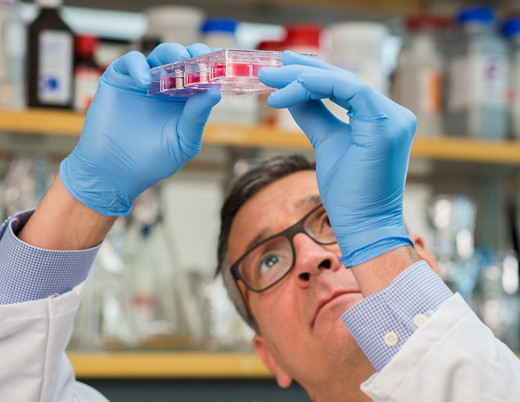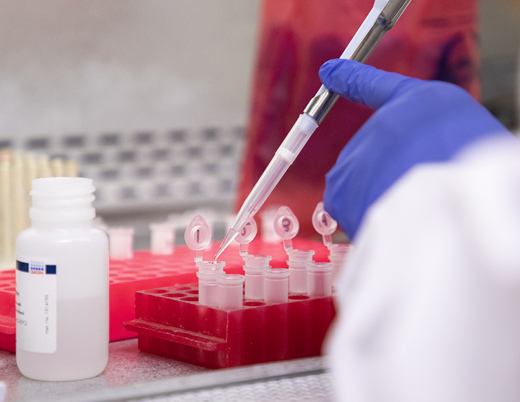There’s maybe no area in medicine moving as fast right now as research on COVID-19, and much of that pace owes to the depth of collaboration and info-sharing that technology makes possible. One research group on the Anschutz Medical Campus saw an opportunity to do better.
“There’s a need for widely accessible, analysis-ready datasets,” says pediatric immunologist and microbiologist Elena Hsieh, MD. “We built a user-friendly research portal that makes it easy to do these multi-omics analyses to answer a variety of research questions.”
They started with a study of 73 participants hospitalized for COVID-19 on the Anschutz Campus and 32 COVID-negative controls. Then they divided out biospecimen materials to perform cross-platform analyses in an array of -omics assays: transcriptomics, proteomics, metabolomics, cytokine profiling and immune cell phenotyping using mass cytometry. Finally, they annotated the results with clinical data.
They call it the COVIDome.
COVIDome research projects so far
When COVIDome researchers used the portal to compare various COVID-omics biosignatures against C-reactive protein, or CRP, an established biomarker of poor COVID prognosis, they found a clear association between elevated CRP levels and damage-associated molecular patterns, depletion of protective serpins and mitochondrial metabolic dysfunction. They published that study in Cell Reports in August 2021.
They also used it to discover that SARS-CoV-2 seroconversion status correlates with certain pathophysiological states, such that it could be used as a biosignature to stratify patients for intervention and even inform analyses of clinical trial results.
Perhaps more important, though, is the service that the database can offer other research groups far beyond the Anschutz Campus – groups that can strengthen the database by adding their own work and data to it. All comers are welcome, says Dr. Hsieh. And they seem to be coming: between launch in November 2020 and June of 2021, the dashboard saw more than 800 unique users from 36 countries around the world.
Featured Researchers

Elena Hsieh, MD
Immunologist
Allergy and Immunology Center
Children's Hospital Colorado
Associate professor
Pediatrics–Immunology and Microbiology
University of Colorado School of Medicine





 720-777-0123
720-777-0123










